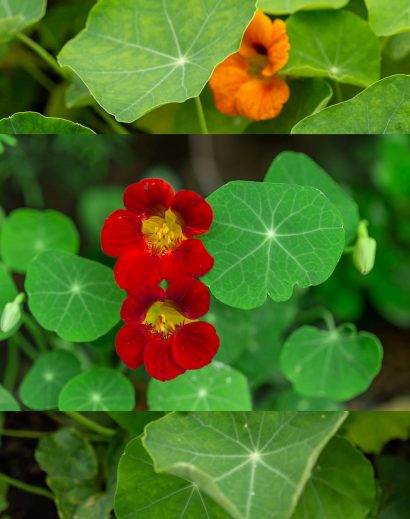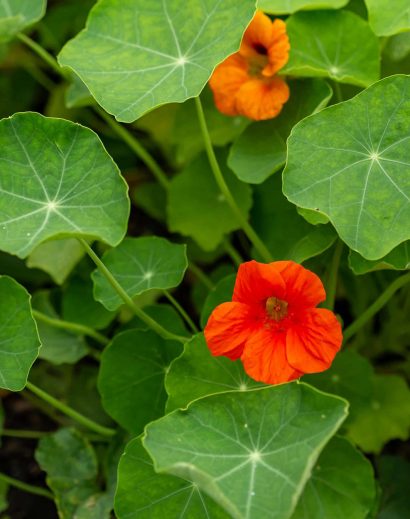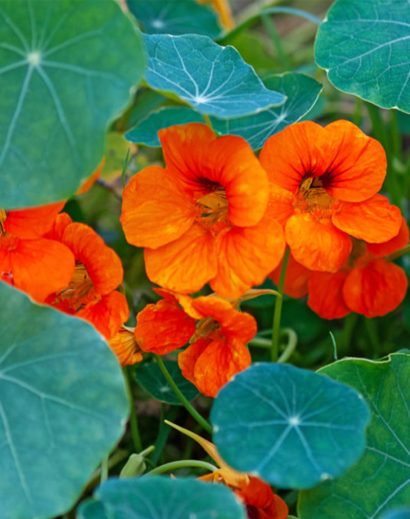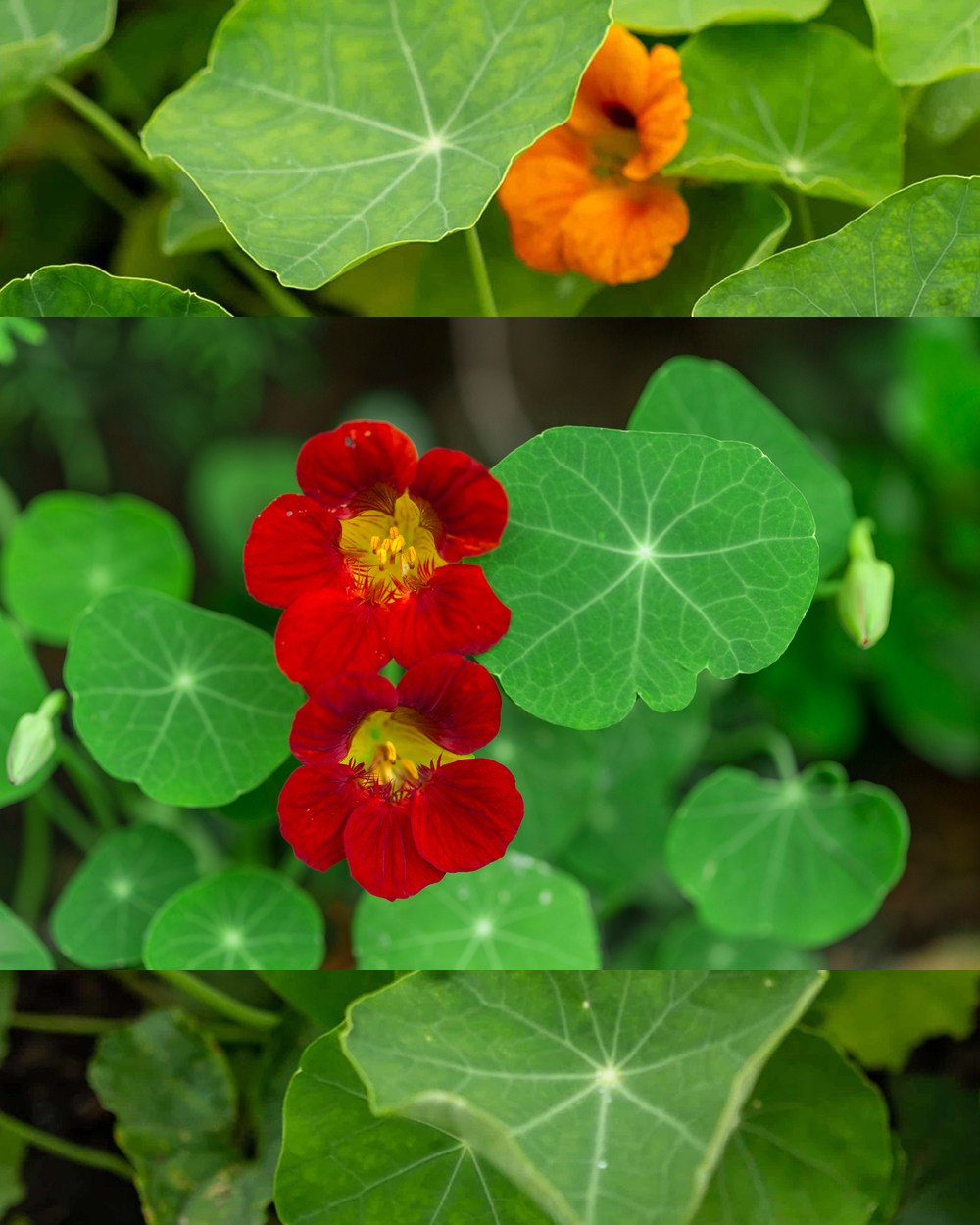Nasturtium (Tropaeolum majus) is not typically referred to as a “herb” but rather as an edible flowering plant. It is often grown for its attractive, colorful flowers and leaves, both of which are edible and have a peppery, slightly spicy flavor. Nasturtium is a popular choice in gardens and is used in both culinary and ornamental applications. Here are some key points about nasturtium:
- Edibility: Nasturtium leaves, flowers, and even immature seeds are all edible. The peppery taste is similar to that of arugula or watercress. People often add nasturtium leaves and flowers to salads for a spicy kick. The seeds can also be pickled and used as a substitute for capers.
- Appearance: Nasturtium plants are known for their bright, vibrant flowers in various colors, including orange, yellow, red, and sometimes cream. The leaves are rounded and typically green, but some varieties have variegated or patterned leaves.
- Growth: Nasturtiums are easy to grow and are often used as a companion plant in vegetable gardens. They can be grown from seeds or transplants and thrive in well-draining soil and full sun to partial shade.
- Climbing Varieties: Some nasturtium varieties are trailing or climbing and can be trained to grow up trellises or fences. This makes them suitable for vertical gardening or for providing ground cover.
- Medicinal Uses: Historically, nasturtium has been used in traditional medicine for its potential antibacterial and antiseptic properties. It contains compounds such as glucosinolates that may have health benefits.
- Pest Repellent: Nasturtiums are sometimes planted near vegetables as a natural pest deterrent. They can help repel certain pests like aphids and caterpillars.
- Companion Planting: Nasturtiums are considered beneficial companion plants for certain vegetables, such as cucumbers and tomatoes, as they can help deter pests and improve overall garden health.
- Culinary Uses: In addition to salads, nasturtium flowers and leaves can be used in sandwiches, as garnishes for various dishes, or even to infuse vinegars and oils with their peppery flavor.
- Garden Ornament: Beyond their culinary uses, nasturtiums are also valued for their ornamental qualities. They can be used to add vibrant color to gardens and containers.
In summary, nasturtium is a versatile plant that is valued for its culinary uses, ornamental qualities, and potential medicinal benefits. It’s relatively easy to grow and can be a valuable addition to both vegetable gardens and ornamental landscapes.





Reviews
There are no reviews yet.